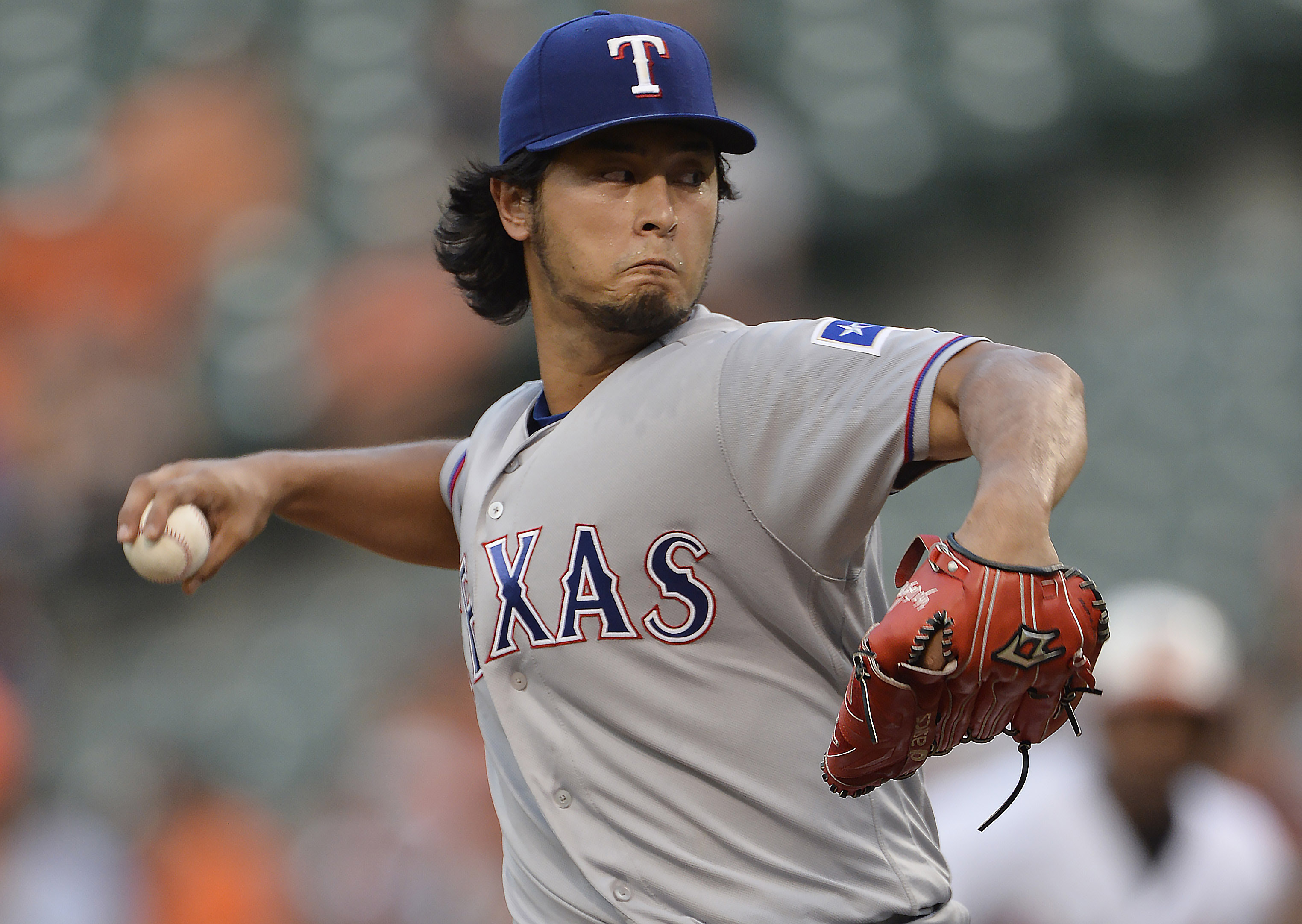It seems for a while now the Yu Darvish game plan has been pretty straight forward: get the count to two strikes and destroy the batter with sliders. And why not? His slider is sharp as a razor, dripping with honey, and makes dreams come true. But there is always room for improvement, and since coming back from Tommy John surgery this year Darvish has found a way to make himself even better.
In 2012, 47% of Darvish’s strikeouts came on a slider. That number increased to 64% in 2013 and was at 57% in 2014. Now, so far in 2016 of Darvish’s 62 strikeouts, 27 have been on a slider. That’s a dip down to 44%. The strikeouts are still there for Darvish. His 12.3 K/9 rate is higher than any other year of his career. So now a chunk of his strikeouts that had been coming off the slider are just simply being generated from somewhere else.
People have always found a reason to knock Darvish, despite his career 3.23 ERA and the highest K/9 in MLB history. It’s hard to understand being disappointed with someone giving you that level of production while averaging six and a half innings per start, but those people are out there. One of the knocks on Darvish has been an inability to establish his fastball, resulting in him working backwards in counts and relying too much on his offspeed pitches, even if they are crazy great.
I have a hard time believing Darvish listened to any of those critics, but he has showed up in 2016 not only establishing his fastball, but using it with authority. All those “missing” strikeouts on sliders have shifted to strikeouts generated by fastballs.
From 2012-14, Darvish collected a fairly consistent 23% of his strikeouts on fastballs. In 2016, 39% of his strikeouts have come from fastballs, and most of those have been whiffs on fastballs in two-strike counts. Darvish’s strikeout swinging percentage is at 89% this season, up from his career average of 82%. In just the last two games against Baltimore and Houston, Darvish has 17 strikeouts, and 13 of them have come on a fastball.
It’s not just strikeouts that Darvish is showing marked improvement with his fastball. He is throwing it harder, averaging 93.8 MPH on his four-seam compared to his 92.8 MPH career average. He’s also generating less contact (66% contact rate vs. career average of 78%) and more whiffs on his fastball overall (15% swinging strike rate, up from 9% in his career).
So now when the count goes to two-strikes, Darvish is no longer just a one-pitch pitcher. The slider is still the signature pitch, what you buy a ticket to see, but the fastball has evolved and developed into a beast of its own. Based on his last three starts, you wouldn’t even know the slider was Darvish’s best pitch – he has thrown it a total of 13 times his last three starts. In 2013, Darvish didn’t have a single start in which he threw fewer than 15 sliders.
Darvish has that other-worldly slider in his back pocket, plus a commanding fastball, and now combine that with a cutter and a curve Darvish is starting to show more of a feel for, and give that to newly acquired Jonathan Lucroy to manage, and you get a result like we saw in Houston, where Darvish finished seven innings on 93 pitches, scattering five hits and walking none, while striking out eight.
I know why people found a way to be upset with Darvish’s performance over his career. It’s an expectation level problem. It’s because it has always been obvious that he has all the potential to be a true number one starter, but a lot of times it seemed he was getting in his own way. In the past couple of weeks we’ve seen that potential realized, and it’s as good as we could have ever expected it to be.
You can find Peter on Twitter @FutureGM. Give him a follow for more thoughts on the Rangers.


